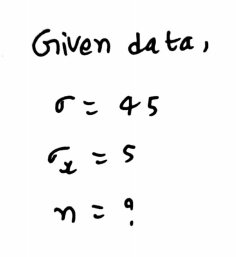nswer this question this week: If the standard error, of a sample data set is 5 and the standard deviation, of the distribution is 45, how many data points, n are in the sample data set?
Continuous Probability Distributions
Probability distributions are of two types, which are continuous probability distributions and discrete probability distributions. A continuous probability distribution contains an infinite number of values. For example, if time is infinite: you could count from 0 to a trillion seconds, billion seconds, so on indefinitely. A discrete probability distribution consists of only a countable set of possible values.
Normal Distribution
Suppose we had to design a bathroom weighing scale, how would we decide what should be the range of the weighing machine? Would we take the highest recorded human weight in history and use that as the upper limit for our weighing scale? This may not be a great idea as the sensitivity of the scale would get reduced if the range is too large. At the same time, if we keep the upper limit too low, it may not be usable for a large percentage of the population!
Example: In another universe hypothetical. (*Get it)
Ho: Smoking does not cause cancer.
If you make a type 1 error, you would say that "Smoking causes cancer" because you would reject the null hypothesis. The truth is "Smoking does not cause cancer" in this universe. (Don't Smoke in our world, probably does cause cancer.)
Answer this question this week: If the standard error, of a sample data set is 5 and the standard deviation, of the distribution is 45, how many data points, n are in the sample data set?

Step by step
Solved in 2 steps with 2 images









